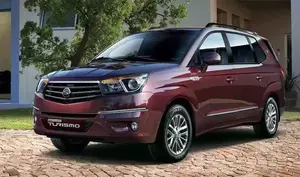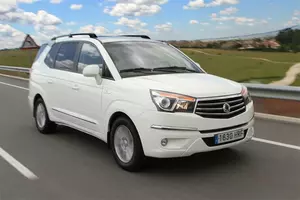
| Vehicle | Precise engine size | Difference from world average | Engine size to consumption ratio | Horsepower from 1 L | Engine size to 100 kg of weight |
|---|---|---|---|---|---|
| SV220 |
2.16 L (2157 cc) |
8.1% smaller | 72 cc to 1 mpg | 82 hp from 1 L | 103 cc to 100 kg |
| SV200 |
2 L (1998 cc) |
14.8% smaller | 71 cc to 1 mpg | 78 hp from 1 L | 91 cc to 100 kg |
| Vehicle | SV220 |
|---|---|
| Precise engine size | 2.16 L (2157 cc) |
| Difference from world average | 8.1 smaller |
| Engine size to consumption ratio | 72 cc to 1 mpg |
| Horsepower from 1 L | 82 hp from 1 L |
| Engine size to 100 kg of weight | 103 cc to 100 kg |
| Vehicle | SV200 |
| Precise engine size | 2 L (1998 cc) |
| Difference from world average | 14.8 smaller |
| Engine size to consumption ratio | 71 cc to 1 mpg |
| Horsepower from 1 L | 78 hp from 1 L |
| Engine size to 100 kg of weight | 91 cc to 100 kg |

| Vehicle | Precise engine size | Difference from world average | Engine size to consumption ratio | Horsepower from 1 L | Engine size to 100 kg of weight |
|---|---|---|---|---|---|
| 200 CDI |
2 L (1998 cc) |
14.8% smaller | 69 cc to 1 mpg | 78 hp from 1 L | 95 cc to 100 kg |
| Vehicle | 200 CDI |
|---|---|
| Precise engine size | 2 L (1998 cc) |
| Difference from world average | 14.8 smaller |
| Engine size to consumption ratio | 69 cc to 1 mpg |
| Horsepower from 1 L | 78 hp from 1 L |
| Engine size to 100 kg of weight | 95 cc to 100 kg |

| Vehicle | Precise engine size | Difference from world average | Engine size to consumption ratio | Horsepower from 1 L | Engine size to 100 kg of weight |
|---|---|---|---|---|---|
| 2.7 i 20V |
2.7 L (2696 cc) |
14.9% bigger | - | 60 hp from 1 L | 135 cc to 100 kg |
| Vehicle | 2.7 i 20V |
|---|---|
| Precise engine size | 2.7 L (2696 cc) |
| Difference from world average | 14.9 bigger |
| Engine size to consumption ratio | - |
| Horsepower from 1 L | 60 hp from 1 L |
| Engine size to 100 kg of weight | 135 cc to 100 kg |